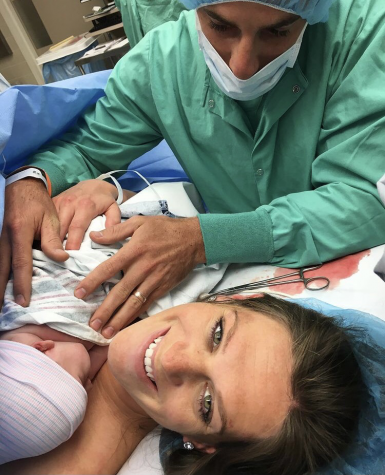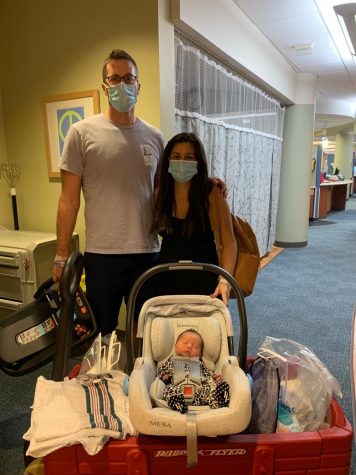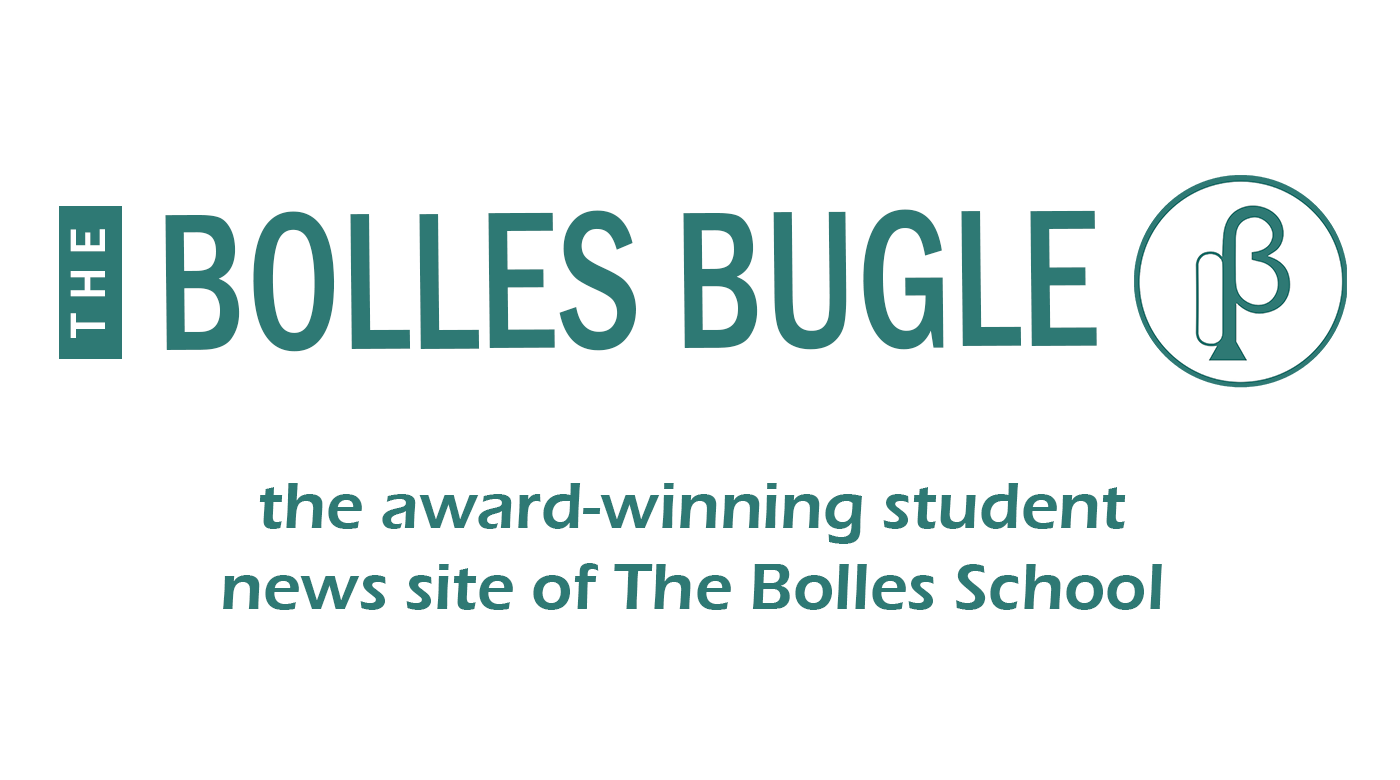Masked Motherhood
This story was written by Intro to Journalism students Maddie Popp and Ella Schellenberg.
Everyone has had individual struggles due to COVID, but imagine being a brand new mother during this time. Though hospitals tend to be safe and sound environments, new protocols and unknown times regarding the pandemic heavily influence the threshold to parenthood.
Upon arrival, Mrs. Bruns, who had her baby October 15th says, “My husband and I had to have our temperatures checked and answer COVID related questions. I had to get COVID tested the Monday before my scheduled Thursday C-section.”
And even on top of all of the uncertainty with COVID, the day of delivery can also come as a surprise, as Ms. Genduso experienced.
She says, “I was especially anxious because my daughter was 25 days early. My water broke the afternoon of the homecoming pep rally!”
The actual procedure is even more worrying for new moms than the nerve-wracking moments leading up to it. On top of all the pain, all people in the hospital are supposed to wear a mask. Everyone knows masks can be restrictive in everyday life, so one could only imagine delivering a baby with one.
Hannah Helow (‘11), who had Leo in May, recounts that “during the procedure, I couldn’t breathe so I ripped off my mask. And the doctors did not say anything about that.”

The worries all come to a temporary end when new mothers are finally able to hold their babies despite COVID, which is an anticipated moment since the beginning of pregnancy. Unfortunately, when Ms. Genduso had Sophia in September, she was unexpectedly admitted to the NICU, and hopes that the view of masked faces doesn’t affect Sophia’s development.
Mrs. Genduso recalls, “It was most upsetting holding my baby while she was in the NICU with a mask on. I wanted her to know my face while she was already alone in a scary place.”
She wasn’t the only one who felt disappointment somewhere along the pregnancy, as the doctors delivered some unexpected news to Hannah at one of her preliminary appointments, which her husband was unable to accompany her to.
She remembers, “I had to start going to my appointments alone starting in March. And that was actually when they first told me I had to get a C-section. And I was alone.”
Not having your loved ones in those appointments is already scary, but with new COVID protocols in the local hospitals, only one other person was allowed in the delivery room with the new mothers in May.
Helow says, “I would have loved for my family to have been able to spend time with me and Leo after the birth.”
But given the circumstances and a later time, Ms. Bruns is very grateful that it was safe and healthy that two other people could be in the room with her.
Ms. Bruns explains, “I was happy with just my mom and husband because I knew they two of them had quarantined and were virus free.”
Not only are protocols different physically this year, but life post-partum can be a struggle mentally, too. With a new baby on board, parents must be extra cautious about bringing germs into the house.

Ms. Bruns says that “I wish the world were normal right now. The stress that COVID has caused during my pregnancy and since the birth of my daughter is like none other. I miss my friends and family and want them to be able to meet my daughter, Luna, and hold her, but I don’t know when I’ll feel safe doing that.”
Fortunately, not all aspects of having a baby during unprecedented times are negative. Transition to parenthood is an experience like no other, and motherhood brings silver linings along with it whether in the midst of a global pandemic or not.
Ms. Genduso describes her post-partum life as “a nice little bubble to escape the craziness. I have barely worn a mask since I’ve been in the house with my daughter and husband.”
————————————————————————————————————-
Maddie Popp
With 17 years of teaching under her belt, Ms. Hudson, who has been at Bolles for 20 years, has tackled the odds to preserve a steady learning environment for her Kindergarteners.
New ways of learning are difficult enough for high schoolers, but touch and affection are a necessary component to the lower schoolers, which is hard to uphold without violating social distancing. Though these kids know they can’t get too close, they don’t completely understand why, and often forget.
Ms. Hudson says, “Sometimes they’re not even thinking, and they’ll come up and’ll grab us with a hug. This age needs that in their development.”
Though they can’t interact like normal, Ms. Hudson has maximized what she has and strives to maintain a warm relationship with her students. Instead of giving real hugs, they have developed a system of heart hugs. When someone needs a hug, the teacher and class raise a heart signal to show support to their peers, and the students’ responses are optimistic.
“Kindergarteners… they’re just tickled peaches to walk in that door and just be happy at school with their friends.”
————————————————————————————————————-
Aren’t All Babies… Like the Same???
Ella Schellenberg, recent winner of FSPA All-Florida Deadline Prose
It seemed all my life that babies from the age of about 1 month to 1 year old seemed very similar. But being a new aunt and experiencing my growing nephew, it turns out there are many different milestones that babies reach during this period. Of course, every baby reaches milestones at different times, but most times, babies have a pretty regular “schedule” of new tasks they can perform.
In the first month, babies will communicate mainly by crying and by minimal cooing.
It is not until the second or third months that babies will start maintaining eye contact and also a good feeding schedule.
Once they get into the fourth month, they’re sounds they can make will expand as they might even start growing teeth. Teething causes much discomfort with the baby, so they will not sleep as well in the night. During this month and the fifth month, they will also start rolling. And then at around the sixth month, they will sit up on their own and giggle a lot. Thus will usher in the “fun” stage where the baby is starting to interact with others.
And at the seven and eighth months they will start to sit up on their own and after this point, they will start crawling within the next couple of weeks. Hopefully there are no hazards for them to choke on, because at nine months, they want to put everything in their mouth.
And then at ten months, they will start to say simple words, like “mama” and “dadda.” Along with this, at around 10 or 11 months, babies will pull up either on a table or other furniture to stand up, so watch out that they do not stand up all night in their crib.
And by their first birthday, they are able to understand commands–even though it is almost certain they will be defiant–and they will start to understand talking and listening. So get out those Dr. Seuss books, because it is reading time!
I was very wrong in thinking that newborn babies and 1-year old babies are similar, because their milestones show that they will undergo many points of development in just their first year of life, and they go by fast!



